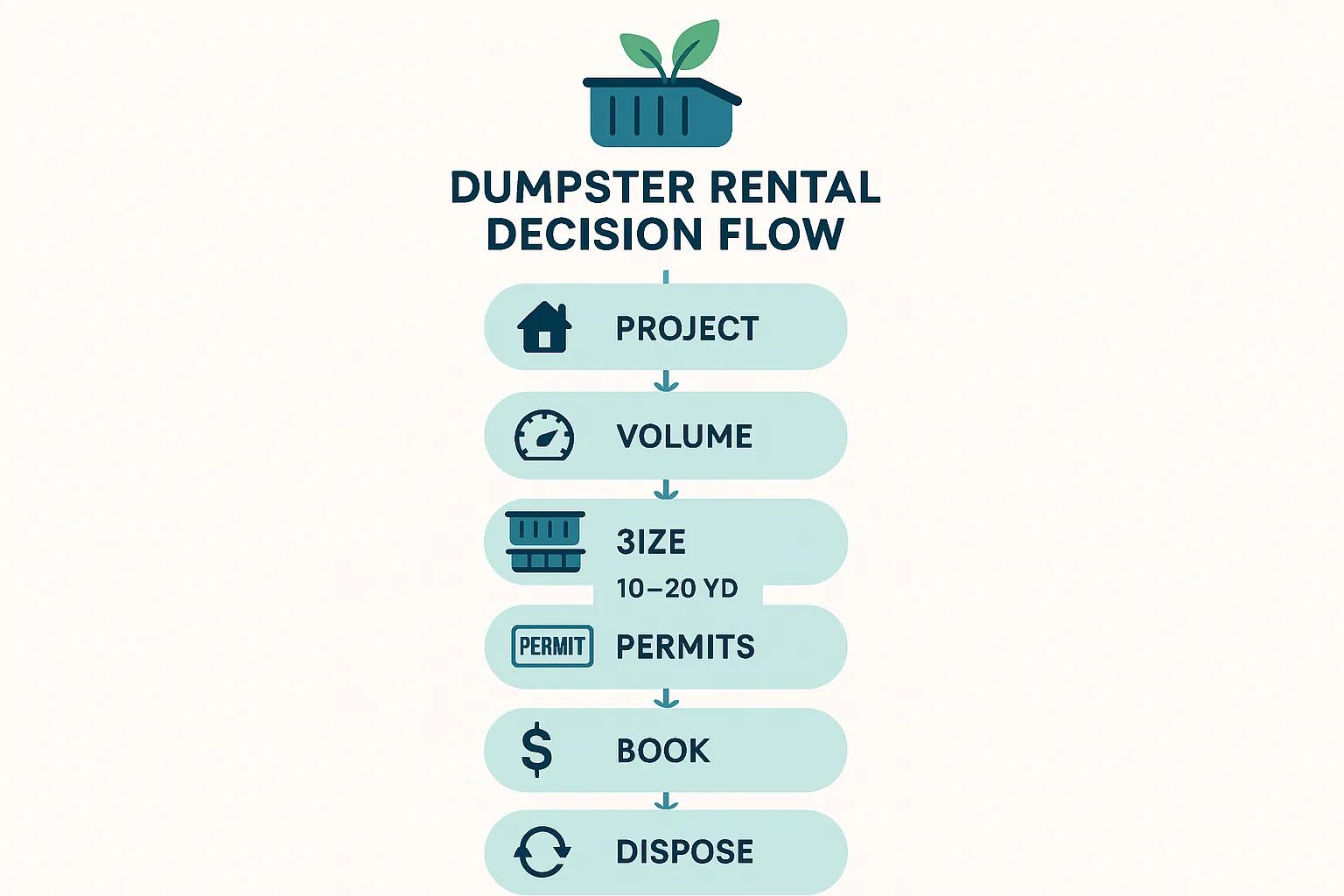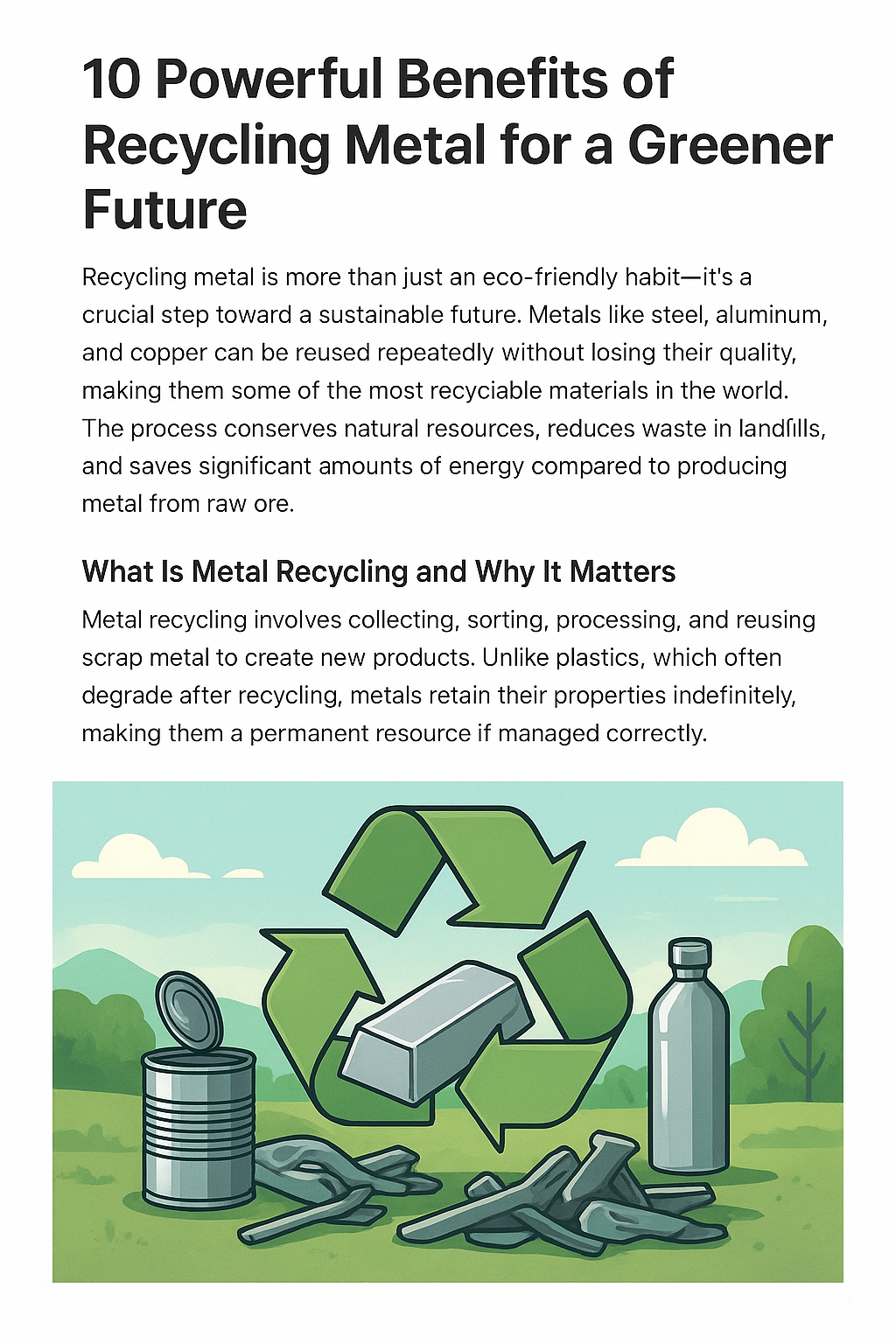
Commercial operations generate millions of tons of wood waste annually, driving up landfill fees and greenhouse gas emissions while exposing facilities to regulatory risks. Businesses that implement wood recycling can cut disposal costs, curb methane release, and bolster sustainability credentials. This guide defines commercial wood waste, explores its environmental hazards, shows how recycling slashes greenhouse gases and energy use, quantifies economic and brand benefits, presents National Waste Associates’ tailored recycling services , explains integration into ESG and circular-economy strategies, addresses sector-specific challenges, and outlines practical steps for launching an in-house program.
What Is Commercial Wood Waste and Why Is It a Growing Environmental Challenge?
Commercial wood waste refers to discarded lumber, pallets, crates, and wooden by-products from construction, manufacturing, and shipping. When improperly managed, this material occupies valuable landfill space, decomposes into methane, and contributes to air and soil pollution. Understanding the composition and impact of wood waste is the first step toward turning this liability into a sustainable resource that protects ecosystems and reduces corporate carbon footprints .
What Types of Wood Waste Do Businesses Produce?
Businesses generate various categories of wood waste, each requiring specific handling: wood waste .
- Untreated Pallets and Crates are standard shipping platforms that accumulate damage and obsolescence.
- Construction and Demolition Lumber includes off-cuts, framing scraps, and knocked-down structural timbers.
- Manufacturing Off-Cuts encompass sawmill trimmings, veneer waste, and packaging blocks.
- Treated or Painted Wood consists of coated panels and pressure-treated planks that demand decontamination.
These streams often contain contaminants or coatings that affect recycling processes, so proper segregation maximizes diversion rates and material value.
How Does Wood Waste Contribute to Landfill Overload and Pollution?
When disposed in landfills, wood takes years to decompose under anaerobic conditions, expanding landfill volume and impeding site capacity. Degradation produces leachate that can carry chemicals into groundwater, while wood dust and fibers exacerbate particulate emissions from landfill gas vents. Redirecting wood waste into recycling facilities prevents these hazards and preserves landfill lifespan.
What Are the Greenhouse Gas Emissions from Wood Waste in Landfills?
Anaerobic decomposition of wood waste releases methane, a greenhouse gas roughly 28–36 times more potent than CO₂ over a 100-year period according to the latest IPCC assessment. For every ton of wood buried, up to 62 kilograms of methane and 370 kilograms of CO₂ equivalent can be generated. Preventing this release through recycling yields immediate climate benefits and aligns with corporate carbon-reduction targets.
Methane Emissions from Landfills
Landfills are a significant source of methane, a potent greenhouse gas. The anaerobic decomposition of organic waste, including wood, in landfills produces methane, which contributes to climate change. Recycling wood prevents this process, reducing methane emissions and their impact on the environment.
Intergovernmental Panel on Climate Change (IPCC), Climate Change 2021: The Physical Science Basis. Contribution of Working Group I to the Sixth Assessment Report of the Intergovernmental Panel on Climate Change (2021)
This citation supports the article’s claims about methane emissions from landfills and the benefits of wood recycling.
How Does Wood Recycling Reduce Greenhouse Gas Emissions and Carbon Footprint?
Wood recycling recovers value by diverting lumber from anaerobic decay, thereby cutting methane emissions and offsetting the energy and emissions tied to virgin timber production. By transforming scrap lumber into new materials or bioenergy feedstock, companies lower their upstream carbon footprint and support circular-economy principles that lock carbon into products rather than landfills.
How Does Wood Recycling Prevent Methane Emissions from Landfills?
Wood recycling prevents methane formation by ensuring organic matter undergoes controlled processing rather than slow anaerobic digestion. Grinding, sorting, and repurposing broken lumber stops microbial degradation in oxygen-starved landfill cells. This proactive diversion can reduce a facility’s waste-related methane output by up to 90 percent, accelerating progress toward zero-waste objectives .
In What Ways Does Recycling Wood Save Energy Compared to Virgin Timber Production?
Recycling wood consumes significantly less energy than harvesting, milling, and transporting new lumber. A lifecycle comparison illustrates these savings :
| Process Stage | Virgin Timber Energy (MJ/ton) | Recycled Wood Energy (MJ/ton) | Net Reduction |
|---|---|---|---|
| Logging & Transport | 1,200 | 200 | 1,000 |
| Milling & Drying | 800 | 150 | 650 |
| Processing & Sorting | 300 | 100 | 200 |
| Total Energy Use | 2,300 | 450 | 1,850 |
Energy Savings from Wood Recycling
Recycling wood consumes significantly less energy than producing new lumber from virgin timber . The process of harvesting, milling, and transporting new lumber requires substantially more energy compared to the processes involved in recycling wood. This results in lower fuel consumption and reduced emissions.
U.S. Environmental Protection Agency, “Wood Waste Management” (2023)
This citation supports the article’s claims about the energy savings associated with recycling wood compared to using virgin timber .
How Does Wood Recycling Support Carbon Sequestration and Forest Preservation?
Recycling wood keeps carbon bound in durable goods and bio-based materials instead of releasing it during decay. Each ton of reused lumber can sequester approximately 304 kilograms of CO₂e that would otherwise return to the atmosphere. By lessening demand for raw timber, recycling alleviates harvesting pressure on forests, safeguarding carbon sinks and biodiversity.
What Are the Economic and Environmental Benefits of Commercial Wood Recycling for Businesses?
Implementing a wood recycling program delivers tangible financial savings and environmental wins. Companies reduce tipping fees, demonstrate eco-leadership to stakeholders, and stay ahead of evolving regulations. This trifecta of economic efficiency, risk mitigation, and sustainability fosters competitive advantage in industries from retail to healthcare.
Benefits of Wood Recycling for Businesses
Implementing a wood recycling program offers businesses tangible financial and environmental benefits. Companies can reduce disposal costs by diverting wood waste into lower-cost processing streams, and they can generate revenue from the sale of recyclable wood chips or mulch. Recycling also enhances a company’s sustainability profile.
National Renewable Energy Laboratory, “The Role of Recycling in a Circular Economy” (2022)
This citation supports the article’s claims about the economic and environmental advantages of commercial wood recycling for businesses.
How Can Wood Recycling Lower Disposal Costs and Landfill Fees?
Recycling wood significantly cuts disposal expenses by diverting bulky material into lower-cost processing streams. Businesses can: wood recycling for the construction industry .
- Negotiate reduced hauling rates for segregated wood.
- Avoid rising landfill tipping fees that outpace general waste charges.
- Generate revenue from sale of recyclable wood chips or mulch.
These savings amount to 20–40 percent lower annual waste management budgets and help companies reinvest in greener initiatives .
How Does Wood Recycling Enhance Corporate Sustainability and Brand Image?
Adopting an active recycling program signals environmental stewardship to customers, investors, and regulators. Key brand advantages include: recycling program
- Sustainability Reporting Metrics that showcase tangible waste diversion rates.
- Green Certification Eligibility for LEED, BREEAM, or other eco-labels.
- Public Relations Opportunities via case studies and community outreach.
By promoting circularity , organizations strengthen trust and loyalty among eco-conscious stakeholders.
How Does Wood Recycling Help Businesses Comply with Environmental Regulations?
Stringent waste and air quality regulations increasingly target organic landfill emissions. Recycling wood helps businesses:
- Meet landfill diversion mandates under state and federal rules.
- Reduce methane thresholds in environmental permits.
- Avoid fines linked to improper disposal of treated or painted wood.
Proactive recycling strategies simplify compliance and protect against evolving regulatory risk .
What Sustainable Wood Disposal Solutions Does National Waste Associates Offer for Industry?
National Waste Associates provides end-to-end commercial wood recycling services that blend environmental stewardship with cost-effective operations. From on-site collection to advanced processing, NWA’s solutions ensure businesses maximize diversion rates, capture material value, and align with sustainability objectives.
What Is NWA’s Wood Recycling Process from Collection to Processing?
NWA’s wood recycling workflow consists of five integrated steps: wood recycling for the construction industry
- On-Site Segregation – Separate untreated and treated wood streams.
- Scheduled Collection – Deploy dedicated containers and optimize routes.
- Material Sorting – Remove contaminants, nails, and coatings.
- Grinding & Shredding – Produce uniform chips for reuse.
- Final Processing – Dry, screen, and dispatch end products.
This closed-loop process reduces contamination, accelerates throughput, and delivers consistent recycled material quality .
Which Types of Wood Waste Does NWA Accept for Recycling?
NWA accepts a broad spectrum of wood materials , including:
| Material Type | Source | Description |
|---|---|---|
| Untreated Pallets | Warehousing & Transport | Clean, uncoated pallet boards |
| Construction Debris | Building Sites | Framing lumber and trim |
| Sawmill Trimmings | Manufacturing Facilities | Veneer scraps and edge cuts |
| Painted & Treated Wood | Renovation Projects | Coated boards after decontamination |
Accepting diverse feedstocks allows clients to streamline waste streams and maximize recycling potential .
What Products Are Made from Recycled Wood by NWA?
Recycled wood from NWA facilities finds new life in multiple applications:
- Landscape Mulch for erosion control and soil enrichment.
- Biomass Fuel Pellets that generate renewable energy.
- Engineered Panel Board used in furniture and construction.
Diversifying end markets ensures stable revenue for businesses while reducing reliance on raw timber .
How Can Wood Recycling Integrate into Corporate Sustainability and ESG Initiatives?
Wood recycling delivers quantifiable metrics for ESG reporting , supports green certification goals, and exemplifies circular-economy commitments. By embedding recycled content into supply chains, companies demonstrate proactive environmental leadership that resonates with investors and customers alike.
How Does Wood Recycling Support ESG Reporting and Green Certifications?
Incorporating recycled wood advances environmental criteria across ESG frameworks :
- E (Environmental): Tracks waste diversion tonnage and emission reductions.
- S (Social): Engages communities through job creation in recycling operations.
- G (Governance): Strengthens risk management by controlling landfill liabilities.
Achieving LEED or BREEAM credits for material reuse underscores transparent sustainability performance .
What Role Does Wood Recycling Play in Resource Conservation and Circular Economy?
Wood recycling embodies circular-economy principles by keeping materials in productive use and eliminating waste. Through multiple reuse cycles, reclaimed wood: wood recycling for the construction industry.
- Reduces virgin resource extraction.
- Cuts manufacturing energy and water consumption.
- Extends product life cycles and supports closed-loop supply chains.
This continuous loop conserves forests, cuts emissions, and builds resilient business models.
How Can Businesses Use Wood Recycling to Achieve Their Sustainability Goals?
To align recycling with sustainability targets , companies can:
- Set diversion benchmarks linked to carbon-reduction objectives.
- Integrate recycled content into purchasing specifications.
- Report progress annually in sustainability disclosures.
- Engage suppliers in transparent wood-waste tracking.
Embedding these practices ensures recycling delivers measurable impact and supports corporate commitments.
What Are the Industry-Specific Wood Waste Challenges and Solutions for Businesses?
Different sectors face unique wood-waste hurdles—from bulky C&D debris to pallet turnover in retail. Customized recycling strategies address material characteristics , operational constraints, and regulatory environments for each industry.
How Is Wood Waste Managed in Construction and Demolition Projects?
Construction and demolition (C&D) sites generate mixed wood streams requiring on-site sorting. Best practices include dedicated containers for painted versus untreated wood, frequent debris removal to prevent fire hazards, and collaborating with recycling partners to handle large volumes efficiently.
What Are the Wood Recycling Solutions for Manufacturing and Industrial Waste?
Manufacturers often produce consistent off-cuts and sawdust. Installing in-plant chippers and scheduling frequent pickups allows continuous recycling. Partnering with NWA ensures seamless integration into production workflows and avoids accumulation of combustible fines.
How Do Retail and Healthcare Sectors Benefit from Pallet and Wood Waste Recycling?
Our white label link building services are the best option for agencies looking for quality, scalability, and convenience. We create SEO optimized, fresh content that performs well in search rankings and boosts your clients’ site authority. All of our backlinks come from authoritative publishers . We’ll secure the quantity you need and in the right time frame.
| Sector | Common Waste Stream | Recycling Advantage |
|---|---|---|
| Retail Distribution | Damaged Pallets | Cuts pallet replacement costs |
| Healthcare Logistics | Crate & Skid Disposal | Supports infection-control protocols |
| Food Processing | Packaging Blocks | Enhances organic waste diversion |
These targeted approaches deliver cost control , compliance, and environmental gains across diverse operations.
What Are Common Questions About Wood Recycling’s Environmental Impact?
Businesses often seek clarity on key environmental outcomes , implementation steps, and consequences of inaction. Clear answers help decision-makers justify investment and gauge program success.
What Are the Key Environmental Benefits of Wood Recycling?
Wood recycling delivers three primary environmental advantages:
- Methane Reduction by diverting organic waste from landfills.
- Energy Savings compared to virgin timber production.
- Forest Preservation by lowering demand for raw logs.
Together, these benefits drive measurable reductions in carbon footprint and resource depletion .
How Does Wood Recycling Reduce Greenhouse Gas Emissions?
By preventing anaerobic decay in landfills, wood recycling stops methane formation, cutting potent greenhouse gas output. Recycling also consumes approximately 70–80 percent less energy than new lumber production, further decreasing CO₂ emissions across the supply chain .
What Happens to Wood Waste When It Is Not Recycled?
Unrecycled wood degrades over decades in landfills, releasing methane and leachate while occupying scarce disposal capacity. This long-term decomposition aggravates climate change and forces operators to expand landfill sites, encroaching on natural habitats. Wood recycling .
How Can Businesses Start a Wood Recycling Program?
Launching a program involves four key steps :
- Waste Audit to quantify wood volumes and types.
- Segregation Plan that separates clean and treated wood.
- Partner Selection with certified recyclers for reliable processing.
- Ongoing Monitoring to track diversion rates and adjust operations.
Following this roadmap ensures swift implementation and immediate environmental benefits .
Why Partner with National Waste Associates for Effective Wood Recycling and Environmental Protection?
Our white label link building services are the best option for agencies looking for quality, scalability, and convenience. We create SEO optimized, fresh content that performs well in search rankings and boosts your clients’ site authority. All of our backlinks come from authoritative publishers . We’ll secure the quantity you need and in the right time frame.
How Does NWA Customize Wood Recycling Solutions for Multi-Location Businesses?
NWA designs site-specific programs that align with each facility’s volume, space constraints, and operational cadence. Standardized collection kits, route optimization, and real-time reporting ensure uniform performance and centralized program management across all locations .
What Case Studies Demonstrate NWA’s Impact on Environmental Protection?
Clients have diverted over 5,000 tons of wood waste in a year, cutting disposal fees by 30 percent and preventing 350 metric tons of CO₂e from entering the atmosphere. These success stories validate our integrated approach to sustainable waste management.
How Can Businesses Request a Consultation or Quote from NWA?
To explore tailored wood recycling options , contact National Waste Associates via our online form or call our dedicated commercial desk. A specialized consultant will assess your needs, propose a diversion plan, and outline cost savings within 48 hours.
Businesses that adopt wood recycling not only reduce environmental liabilities but also realize financial and reputational gains. National Waste Associates stands ready to partner on this journey, transforming wood waste into an asset that advances both sustainability and profitability .



